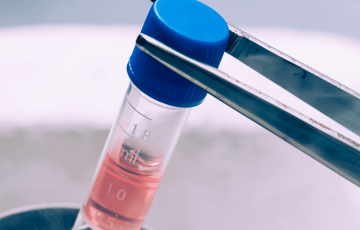There are a handful of reasons why you or your partner may not be able to reproduce naturally, but fertility treatments continue to evolve and make the process of fertilization easier.
Among all fertility treatments out there, IVF tends to be the most common.
What is IVF?
In vitro fertilization, or IVF, is one of the most effective fertility treatments. The treatment involves extracting eggs, retrieving a sperm sample, and combining the two as part of the fertilization process.
As a soon-to-be mother who is about to begin IVF, it’s always helpful to know what you can expect from the process.
5 Steps of the IVF Process
The average IVF cycle takes usually takes around 6-8 weeks.
The process begins on day 1 of your period. Naturally, your body produces a single egg during each monthly cycle. For someone struggling to conceive, a single egg is not enough. Therefore, the first step in the IVF process looks to stimulate egg production.
1. Fertility Medication
On the first day of your period, you will begin taking medication that contains FSH (follicle-stimulating hormone) and LH (luteinizing hormone) to encourage the production of more eggs in your ovaries. You’ll take this for an average of 8-14 days.
This medication is administered in the form of injections. Once you’re taught how to self-administer the injection, you do this part of the treatment at home following your doctor’s instructions. Blood tests and ultrasounds are used to monitor the process and adjust dosing as needed.
The dose of the injection varies depending on what your doctor feels is best for your situation. Generally speaking, the higher the dose, the higher the cost. While a higher cost may seem like a small price to pay to increase your chances of becoming pregnant, once you produce 15-20 eggs, your chances of conceiving stop increasing.
2. Egg Retrieval
Next, once the doctor is satisfied with the number and size of the follicles that produce eggs, you will be given a drug that forces the eggs to mature. It’s essential to keep in mind that only about 75% of follicles produce a potentially viable egg.
After 36 hours, your fertility doctor will retrieve the eggs by inserting a small needle in your pelvic cavity to access the ovaries and drain the follicles.
3. Sperm Collection
Before fertilization can occur, your doctor or the clinic will collect sperm from your partner or a donor. These cells are then prepared to be combined with the egg in a process called insemination.
4. Fertilization
Once your doctor retrieves the eggs, they are placed in a petri dish to be fertilized. There are several ways to do this, but the technique used in your case will depend on both the clinic’s laboratory and your doctor’s decision.
These options include conventional insemination, Intracytoplasmic Sperm Injection, or ICSI. ICSI is most commonly used in cases where there is a low probability of fertilization. In this method, the sperm is injected directly into the egg.
After this process, the eggs are monitored to confirm fertilization. If fertilization occurs, those eggs are considered embryos.
5. Transfer Embryos
The next step after fertilization is to grow the embryo. This step is the most difficult in the process, and as a result, most eggs and embryos are lost in this part of the process.
Three to five days after the fertilization process the embryos are transferred to your uterus. Using a catheter or small tube, your doctor will transfer the embryos. This is a painless procedure for most women.
If the cycle is successful, the implantation occurs six to eight days after the egg retrieval.
What Happens After an IVF Cycle?
After undergoing IVF, you will have to wait eight to ten days to find out if you’re pregnant. During this time, you can return to your normal day-to-day life.
It’s important to understand that even though IVF is the most effective fertility treatment available, it doesn’t give you a 100 percent chance for pregnancy.
For many women, the first cycle is the most likely to work. If after the waiting period you learn that you are not pregnant, you can always do another round of the fertility treatment. While your chances of becoming pregnant lower with each IVF cycle, it’s not uncommon for the second or third cycle to result in pregnancy.



